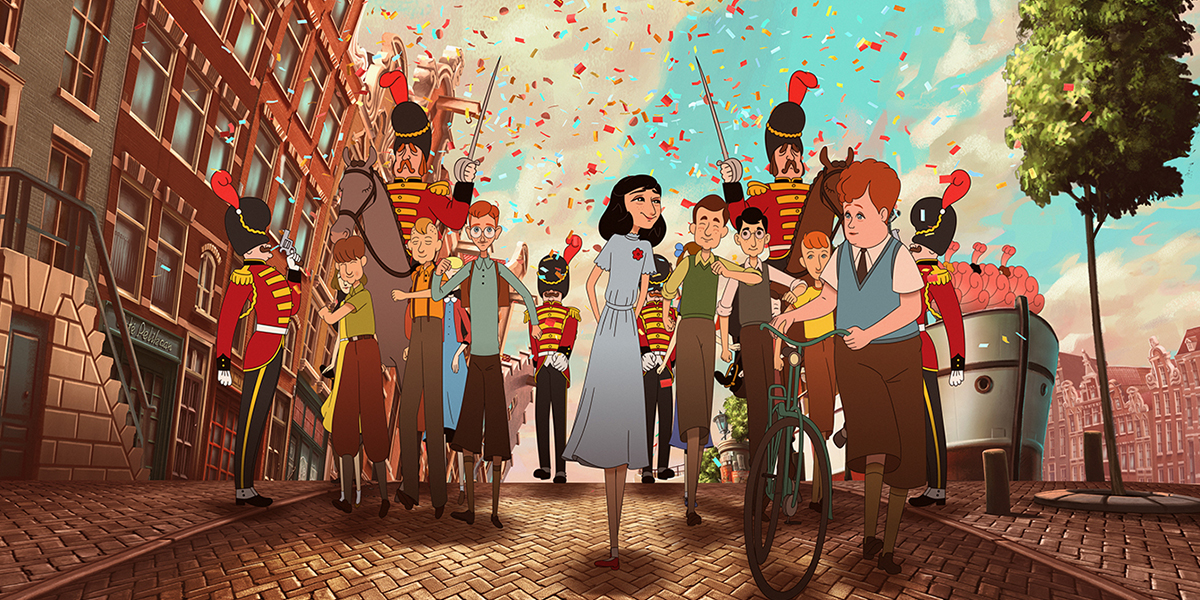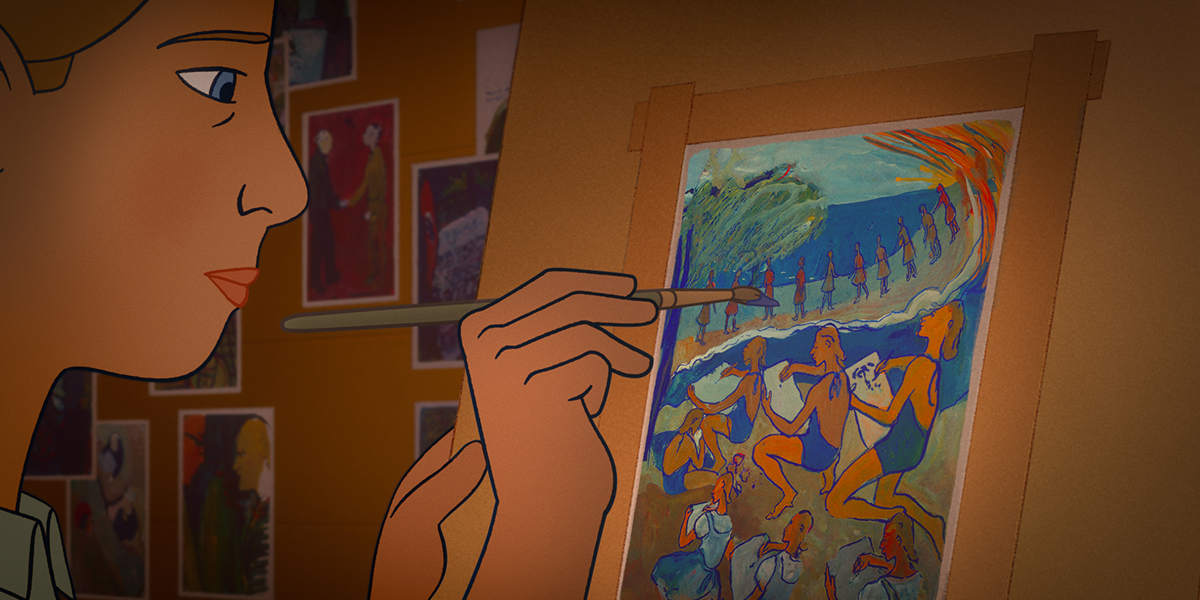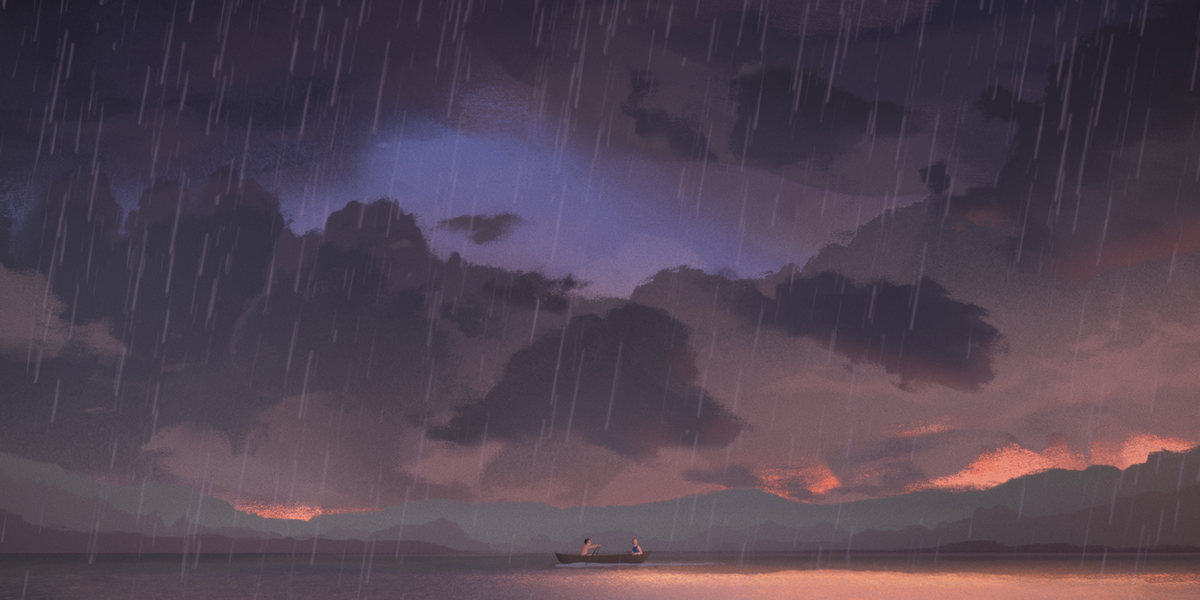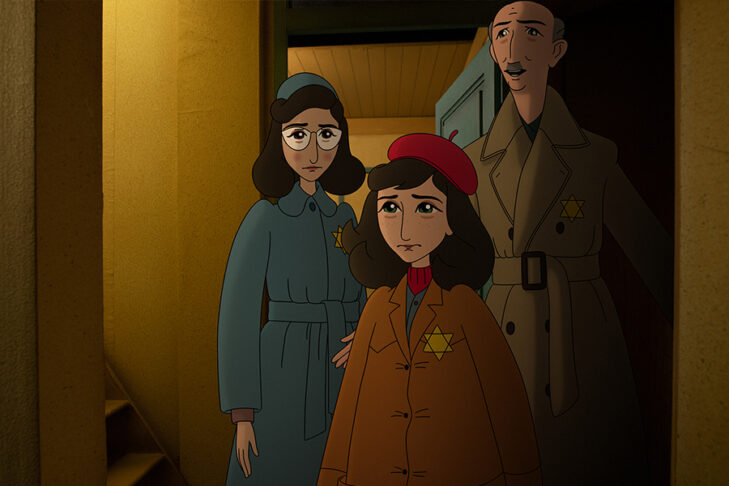There aren’t really many animated films about the Holocaust, so it’s a bit surprising that the 2021 Toronto International Film Festival screened not one but two animated films about victims of the Shoah. Despite their similarity in medium and subject matter, “Where Is Anne Frank?” and “Charlotte” offer two very different cinematic experiences, neither great but both interesting and respectable in their own ways.
“Where Is Anne Frank?” is the film that’s arriving with more hype, due to both its world-famous source material and the prestige of Israeli director Ari Folman. Folman’s “Waltz with Bashir” is one of the most powerful works of adult animation in history, and his sci-fi follow-up “The Congress” was baffling yet artistically stunning. “Where Is Anne Frank?” is his first time making a film aimed at children, but for better or worse, his ambition hasn’t been the least bit reined in by his audience.

There are two storylines happening in “Where Is Anne Frank?” One is a straightforward adaptation of Anne Frank’s diary, told in such a way that it could be used to introduce 8- or 9-year-olds to her story. These segments are fairly simplistic but are enlivened by gorgeous animation and light fantasy elements: we see conversations between Anne and “Kitty,” the imaginary friend to whom she wrote her diary entries, and dreams in which her favorite movie stars and Greek gods do battle against monstrous Nazi soldiers.
The wraparound story gets a lot weirder: In the near future (“One year from now,” the title cards state), Kitty has magically come to life from within the diary. In the Anne Frank House, she’s invisible, but when she steps outside with the diary in hand, she takes physical form. Her quest to find out where her friend/creator went might be a parallel to young kids learning this story for the first time, but everything involving the city of Amsterdam’s quest to track the diary down is a more adult-oriented meta-commentary on Anne Frank’s legacy and the hypocrisy of a culture that elevates an ordinary girl to godlike status yet does nothing to help other children just like her seeking refuge from war now.

I’m curious how this film will play with kids, since it’s narratively disjointed in ways where it’s not clear who the film is really for. Weak voice acting and sometimes clunky dialogue drags the film down, but the scenes in which Kitty comes to the defense of Amsterdam’s refugees are genuinely moving, and in combination with Folman’s visual invention and Karen O and Ben Goldwasser’s beautiful musical score, it makes for a film worth seeing.
“Charlotte,” a Canadian film directed by Eric Warin and Tahir Rana, is more clear in its aims and its audience. This is a more traditional biopic aimed at adult (or at least older teenage) audiences. The subject is Charlotte Salomon, a German-Jewish painter whose autobiographical magnum opus, a series of 769 paintings titled “Life? Or Theater?,” could be considered the first graphic novel. Killed in Auschwitz in 1943 at the age of 26, she lived her life in danger both for being a Jewish woman and for being an artist whose expressionist works fit the Nazis’ definition of “degenerate art.”

On top of these external dangers, the most interesting part of Charlotte are the conflicts closer to home. Having grown up believing her mother died from influenza, she finds out her death was actually a suicide; in a couple of harrowing sequences, her grandmother attempts suicide twice and ends up completing the act. There’s a question hanging over the film of whether the family history of mental illness would have killed Charlotte had the Nazis not done so first, but despite these anxieties, Charlotte makes it her goal to find happiness even when the world around her is horrible.
“Charlotte” is more coherent than “Where Is Anne Frank?” and has a much more impressive voice cast, featuring the likes of Kiera Knightley and Jim Broadbent. However, it’s a bit less interesting as a film. The animation is merely passable, never achieving the beauty of Charlotte’s own art, and it runs into the common biopic issue of being more a sequence of events rather than a propulsive narrative.

Hopefully release plans will be announced soon for both films so wider audiences can check them out—flaws and all, both “Charlotte” and “Where Is Anne Frank?” are important in terms of expanding the types of stories animation can handle.



